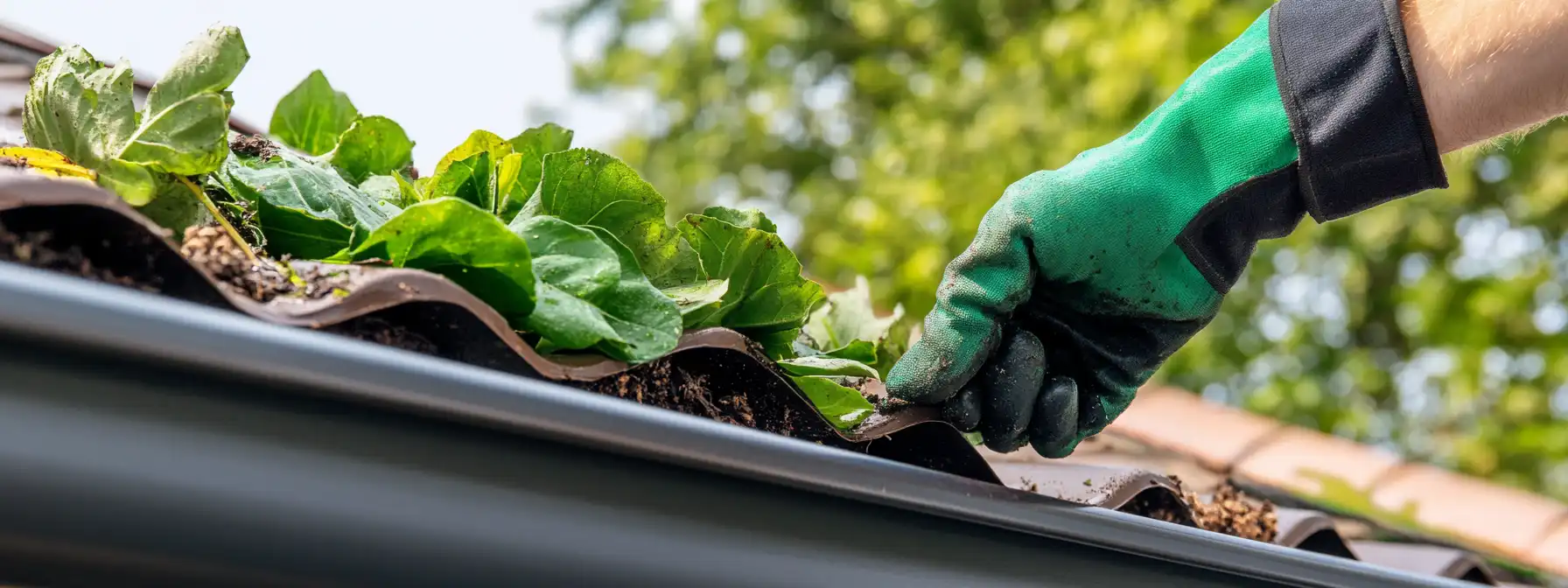Gutter Cleaning for Storm-Prone Areas: Preparing for Severe Weather
July 23, 2025
•
Written By
Coastal Roofing Specialist LLC

When the clouds gather and the winds start howling across the Texas Gulf Coast, homeowners know the drill. Tie down the patio furniture. Check the windows. But one thing that often gets overlooked until it’s too late? Your gutters.
In regions like Friendswood, League City, and Pearland, where storms are part of the season, gutter cleaning for storm-prone areas is one of the most important steps you can take to protect your home.
What you’ll learn in this article:
- Why storm-prone areas require more frequent gutter cleaning
- What can go wrong if gutters are ignored
- How to clean, inspect, and storm-proof your gutters
- When to call in a professional before the next storm hits
Not sure if your gutters are ready for the next downpour? Schedule a free inspection with Coastal Roofing Specialist LLC, we’ve got your back.
Why Gutter Health Matters in Storm-Prone Areas
Let’s break it down: gutters are the unsung heroes of your home’s exterior. They collect rainwater from the roof and guide it away from your siding, landscaping, and, most importantly, your foundation.
But when gutters are clogged with leaves, twigs, or roof debris, the water has nowhere to go. Instead of flowing down and away, it spills over the sides, backs up onto the roof, or pools at the base of your home. That’s a recipe for leaks, rot, mold, and foundation damage.
Here in coastal Texas, we face added challenges:
- Frequent storms and flash floods mean your system needs to be ready at all times.
- High winds send debris straight into gutters.
- Humidity and moisture encourage algae, mold, and rust in neglected gutters.
Regular gutter cleaning for storm-prone areas keeps water where it belongs and protects your investment.
What You’ll Need Before You Clean
If you’re tackling gutter cleaning yourself, here’s what you’ll want on hand:
- A sturdy extension ladder (with stabilizers, if possible)
- Work gloves and safety goggles
- A scoop or trowel to remove debris
- Two buckets: one for debris, one for tools
- A garden hose with a spray nozzle
- Gutter sealant (in case you find a small leak)
- Optional: a plumber’s snake for downspout clogs
Prefer not to get on a ladder? That’s where local professionals like Coastal Roofing Specialist LLC come in. We handle multi-story homes and complex systems safely and thoroughly.
What Are the 6 Gutter Cleaning Tips for Storm-Ready Homes?
Getting your gutters ready for storm season means more than just scooping out leaves. These steps will help ensure your system can handle heavy rainfall, gusty winds, and flying debris, all common in storm-prone regions like coastal Texas.
1. Start at the Downspouts
Why: Clogs are most common here and often go unnoticed until water backs up or spills over. During storms, downspouts bear the brunt of water volume, and blockages can lead to overflow that floods your foundation or basement.
What to do: Remove any strainer baskets or guards covering the downspout entrance. Use your gloved hands or a scoop to remove compacted debris, then flush with a garden hose. If water isn’t flowing freely, use a plumber’s snake or pressure nozzle to clear internal clogs. Check the base of the downspout, too; soil, mulch, or underground drains can block discharge areas.
2. Scoop Out the Gunk
Why: Wet leaves, pine needles, roof granules, and even bird nests can quickly accumulate, especially after a windy storm. This debris adds weight to your gutters and can cause them to sag or separate.
What to do: Starting near the downspout, work section by section, using a gutter scoop, small hand trowel, or even a repurposed plastic spatula. Drop debris into a bucket or bag hung from your ladder. Be cautious not to scrape or dent the inside of your gutter, especially if it’s metal or already aging.
Pro tip: If your home has a steep roof pitch or two stories, consider hiring a pro to handle the cleaning safely.
3. Flush With Water
Why: Even after manual cleaning, grit and small particles can remain. Flushing helps ensure complete removal, reveals any leaks or low points, and lets you check the system’s performance in real-time.
What to do: Use a garden hose with a high-pressure nozzle. Spray toward the downspout end, never back toward the roofline. Watch closely for uneven water flow, areas where water lingers, or signs of overflow. These could indicate clogs, misalignment, or damage that requires attention.
Bonus tip: If water flows too slowly, it may be a sign your gutters are pitched incorrectly and need to be re-sloped.
4. Check for Damage
Why: Strong winds, hail, and debris can cause structural damage to your gutters, problems that often go unnoticed until the next big storm hits.
What to do: Visually inspect each section for cracks, pinholes, rust spots, or sections that have pulled away from the fascia. Gently press on the gutter; if it feels loose or uneven, the hangers may be compromised. Look for water stains on the siding or fascia board, which often indicate undetected leaks or overflows.
Recommendation: Document any damage with photos, especially if you’re planning to file a storm-related insurance claim.
5. Secure Loose Brackets
Why: For gutters to drain effectively, they need a steady, downward slope of about ¼ inch for every 10 feet. Loose or missing fasteners can interrupt this flow, causing standing water that leads to rot, mold, and mosquito breeding grounds.
What to do: Check that brackets and hangers are securely fastened to the fascia board. Tighten screws with a drill or screwdriver. If the holes are stripped, move the fastener slightly and use a wood filler or larger screw. Replace damaged brackets as needed, and make sure the entire run maintains a consistent slope.
Tip: Aluminum and vinyl systems may warp over time. If you’re adjusting multiple brackets, use a level or string line to ensure proper pitch.
6. Inspect Gutter Guards (If Installed)
Why: Gutter guards can reduce how often you clean, but they’re not a set-it-and-forget-it solution. Storm debris can settle on top or sneak underneath, especially if guards have shifted or cracked.
What to do: Clear off any visible buildup from the tops of guards. Then, lift a few sections (if removable) to check underneath. Make sure the mesh or perforations are not clogged with granules, seeds, or pine needles. Inspect for gaps, cracks, or improper fit that could allow water or debris through.
Important: If you see rust, warping, or excessive buildup, it may be time to repair or upgrade your gutter guard system before the next storm.
Why It Matters & What It Saves
Storms don’t give you a grace period. If your gutters are clogged or failing, a single thunderstorm can cause:
- Roof leaks from backed-up water under shingles
- Siding stains and mold from overflow
- Foundation cracks from water pooling near the base
- Landscape erosion from uncontrolled runoff
- Pest infestations from standing water
Quick Storm Prep Gutter Checklist
- Remove leaves and roof debris
- Flush downspouts and elbows
- Check for visible sagging or cracks
- Tighten loose brackets or hangers
- Look for signs of rust or corrosion
- Confirm water flows at least 3 feet away from your foundation
- Book a free professional inspection
Texas Gutter Maintenance FAQs
How Often Should Gutters Be Cleaned In Storm-Prone Areas?
At least twice a year, and quarterly if you have trees nearby or frequent storms.
Are Gutter Guards Worth It In Storm-Prone Regions?
Yes, but they still require periodic inspection and cleaning. They reduce but don’t eliminate debris.
What Are Signs My Gutters Are Storm-Damaged?
Sagging, leaks, overflowing, and detached downspouts are all red flags. Schedule an inspection if you notice any.
Can Clogged Gutters Cause Roof Leaks?
Yes. Water can back up under shingles, especially during heavy rainfall, leading to interior damage.
When Should I Hire A Professional?
If your home is two stories or higher, or if you see damage. It’s safer and ensures thorough cleaning and inspection.
Be Storm-Ready, Starting With Your Gutters
In storm-prone parts of Texas, neglecting your gutters isn’t just risky, it’s costly. Regular gutter cleaning for storm-prone areas is one of the easiest and most effective ways to protect your home from avoidable water damage.
At Coastal Roofing Specialist LLC, we believe in proactive protection. From comprehensive gutter cleanings and inspections to full replacement and guard installation, we’re here to help you prepare before the next storm hits, not after.
We’re fully licensed and insured, with strong local ties and a commitment to craftsmanship and care.
Schedule your free inspection today and let’s make sure your gutters are ready for whatever Texas weather brings next.
Recent Articles

Residential Fencing
Installing a Fence on a Slope: Overcoming Challenges
Learn smart tips for installing a fence on a slope. Explore step-down, racked, and terraced solutions. Schedule your free inspection today!
August 26, 2025

Residential Roofing
Roofer Reviews Near Me: Finding a Trusted Professional
Need a roofer you can trust? Learn how to read roofer reviews near me, spot red flags, and find the right fit. Schedule your free inspection.
August 20, 2025

Residential Roofing
Roof Repair to Keep Animals Out: Preventing Unwanted Guests
Learn how to prevent animals in your attic with roof repair tips that block entry points, protect vents, and keep your home safe year-round.
August 14, 2025

Residential Roofing
Questions to Ask a Roofer: Ensuring a Successful Project
Know what to ask before hiring a roofer. This guide covers smart questions, red flags, and how to choose a contractor you can trust in Texas.
August 5, 2025
.png)